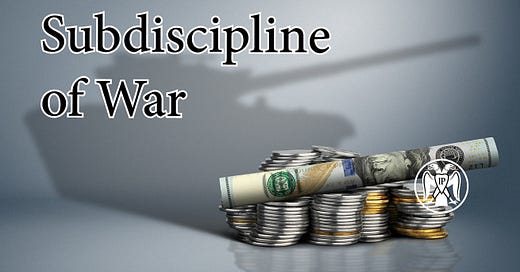Yarvin is really unfashionable these days as a “reactionary” who couldn’t quite shed his lolbertarianism. And there’s a great truth to this. His takes since returning to activity in the Trump era have been ice cold, and he’s made a reputation in recent times as an edgy regime apologist. But there’s a saying that “Moldbug was better than Yarvin” and this too is true—his pre-2014 work is still insightful, and still in many ways undigested in the radical right.
One of his insights that he takes straight from Clausewitz is that there’s a continuum between economics and violence. The supposed “laws” of economics that support free trade (such as comparative advantage) are based on abstracting away violence; they’re based on drawing a hard line between coercive and uncoercive relations between nations. But this is an artificial distinction, and once you get rid of it free trade and open borders make no sense, even putting aside for a moment how destructive these things are to ethnicities.
But how exactly is it “violence” to remove a tariff? To answer this, we have to examine the nature of war in the 21st century.
We outlined this briefly in our article Out of the Barrel of a Gun, and we went into depth on it in the latest Kulture Dads episode. If you look at how war has changed over the centuries, you notice two main trends: a) the battle front grows less and less distinct, and b) violence grows more and more abstract.
In the beginning, war was a chaotic affair but the battle lines were clear and the violence absolutely concrete. At some point it became professionalized and involved mass conscription, which means formation and discipline. Wars were won by complex battlefield maneuvers requiring a whole military culture, and we get line and column warfare. With the industrial revolution, mass production put more emphasis on the home front. War involved the whole society more than ever, which had to mass produce materials, weapons, etc. Technology and economy become more of a factor, and we get trench or industrial warfare. With the development of the internal combustion engine this is amplified, and now women must enter the factory or risk losing the war—here we have blitzkrieg warfare, and nation-states are king.
But eventually, someone discovers the home field advantage. In wars like Vietnam, the friend-enemy distinction is blurred—the battle is not so much “over there” as it could be anywhere. Any civilian could be the Viet Cong. What’s more, we don’t have men fighting each other on behalf of nations so much as on behalf of ideas. You’re not fighting Vietnam on behalf of America, but you’re fighting communism on behalf of freedom. It’s not enough to neutralize your opponent’s influence, you want to cripple his economy, undermine his alliances, isolate him—you want to cripple his whole way of life. Here nation-states are no longer at an advantage; we have a situation where a confederation of tribal insurgents can beat a post-industrial superpower. We have guerrilla warfare.
This is all multiplied by an order of magnitude with the death of mass media. In unrestricted warfare, the front is completely universalized. We’re no longer fighting against formations of men, nor even tanks or guerrilla insurgents. Today, warfare is waged against foreign influence campaigns, misinformation, non-state actors like NGOs, hackers, fed ops, conspiracy theorists, and questioners of “democracy”. War has become informational and ideological, and completely totalized—anyone and everyone is involved. It’s a war on belief, morale, motivation, a war against one’s very sense of legitimacy. So, when the shitlib says that “words are violence”, he is not wrong in that words are weapons of war. War now imposes operational costs not only on military action, but on governance itself. If waged effectively, war makes a people impossible to govern, and colour revolution is the ultimate result. The goal is not only to cripple your enemy’s way of life, but to erase it altogether.
At every step in this process, you see violence go from concrete to abstract. Instead of sticking a bayonet into your enemy’s eye, you fill it full of mustard gas. Then instead of gassing him, you do surgical strikes to take out his communications. Then instead of that, you make him think enemies could be anywhere and bleed his will to fight. Then you make him think that his own neighbour is his enemy, that his existence is illegitimate, and you collapse his trust in his society. At each stage, as each front grows more abstract, you defeat him before he even reaches the last front.
With this in mind, we’re now in a position to understand just what happened during the COVID era, and what’s happening now with the looming banking crisis.




